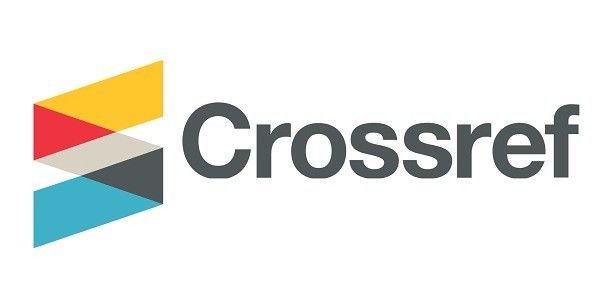Optimalisasi Pemanfaatan Kotoran Kelelawar terhadap Pertumbuhan Sambung Pucuk Tanaman Kakao Klon M-45
Optimizing the Utilization of Bat Manure on the Growth of the grafting of Cocoa Clones M-45
DOI:
https://doi.org/10.30605/perbal.v10i1.1658Keywords:
Tanaman kakao, sambung pucuk, kotoran kelelawarAbstract
Kakao merupakan salah satu komoditas perkebunan yang peranannya cukup penting bagi perekonomian nasional, khususnya sebagai penyedia lapangan kerja, sumber pendapatan dan devisa negara. Disamping itu kakao juga berperan dalam mendorong pengembangan wilayah dan pengembangan agroindustri, khususnya daerah Sulawesi Tengah, Sulawesi Tenggara, dan Sulawesi Selatan. Sebagai komoditas terpenting ketiga setelah karet dan kelapa sawit, kakao merupakan salah satu sumber utama pendapatan petani. Penelitian ini bertujuan untuk mengetahui: (1) Optimalisasi pemanfaatan kotoran kelelawar terhadap pertumbuhan sambung pucuk tanaman kakao klon M-45. (2) Untuk mengetahui dosis kotoran kelelawar yang efektif terhadap pertumbuhan sambung pucuk tanaman kakao klon M-45. Penelitian ini dilaksanakan di Lahan Percobaan I Fakultas Pertanian, Universitas Cokroaminoto Palopo, di Kelurahan To’ Bulung, Kecamatan Bara, Kota Palopo, dimulai bulan Desember 2019 sampai Februari 2020. Penelitian ini menggunakan Rancangan Acak Kelompok (RAK). Penelitian ini terdiri dari 6 perlakuan dan 4 ulangan, sehingga dalam penelitian ini terdapat 24 unit percobaan, setiap unit percobaan terdapat 2 sampel tanaman sehingga terdapat 48 sampel tanaman pengamatan. Percobaan yang diberikan yaitu, P0: Tanpa perlakuan, P1: Pemberian kotoran kelelawar 225 gram, P2: Pemberian kotoran kelelawar 250 gram, P3: Pemberian kotoran kelelawar 275 gram, P4: Pemberian kotoran kelelawar 300 gram, P5: Pemberian kotoran kelelawar 325 gram. Hasil penelitian ini menunjukkan pengaruh tidak nyata terhadap pertumbuhan sambung pucuk tanaman kakao Klon M-45. Perlakuan P5 dengan dosis kotoran kelelawar 325 gram memberi respon terbaik pada pertumbuhan panjang tunas: 13,88 cm, jumlah daun: 14,50 helai, diameter tunas: 1,08 cm. Hari muncul tunas terbaik yaitu pada perlakuan P2: 16,00. Hal ini diduga karena terpenuhinya unsur hara terhadap pertumbuhan sambung pucuk tanaman kakao klon M-45.
Cocoa is one of the plantation commodities whose role is quite important for the national economy, especially as a provider of employment, a source of income and foreign exchange. Besides that, cocoa also plays a role in encouraging regional development and agro-industry development, especially in Central Sulawesi, Southeast Sulawesi, and South Sulawesi. As the third most important commodity after rubber and oil palm, cocoa is one of the main sources of income for farmers. This study aims to determine: (1) Optimizing the use of bat manure on the growth of shoot grafting of the M-45 clone of cocoa plants. (2) To determine the effective dose of bat manure on the growth of shoot grafting of M-45 clones of cocoa. This research was conducted at Experimental Field I, Faculty of Agriculture, Cokroaminoto University, Palopo, in To' Bulung Village, Bara District, Palopo City, starting from December 2019 to February 2020. This study used a Randomized Block Design (RAK). This study consisted of 6 treatments and 4 replications, so that in this study there were 24 experimental units, each experimental unit contained 2 plant samples so that there were 48 samples of observed plants. The treatments namely, P0: No treatment, P1: 225 grams of bat manure, P2: 250 grams of bat manure, P3: 275 grams of bat manure, P4: 300 grams of bat manure, P5: 325 grams of bat manure. The results of this study showed no significant effect on the growth of the buds of the M-45 clone of cocoa plants. P5 treatment with a dose of 325 grams of bat dung gave the best response to the growth of shoot length: 13.88 cm, number of leaves: 14.50 strands, shoot diameter: 1.08 cm. The day the best shoots appeared was treatment P2: 16.00. This is due to the fulfillment of nutrients for the growth of shoot grafting of cocoa clones M-45.
Downloads
References
Agustin, A. D., Riniarti, M. dan Duryat. (2014). Pemanfaatan Limbah Serbuk Gergaji dan Sekam Padi Sebagai Media Sapih untuk Cempaka Kuning (Michelia champaca). Jurnal Sylva Lestari. Vol. 2 No. 3, September 2014 (49—58).
Badan Pusat Statistika. (2018). Produksi Tanaman Kakao di Sulawesi Selatan. BPS Sulawesi Selatan.
Bustami dan E. Rosa. (2017). Kajian Efektivitas Pemberian Pupuk Guano dan Biochar terhadap Produksi dan Serapan Hara Tanaman Padi. Universitas Abulyatama. Jurnal Agrotek Lestari. Vol. 4 No.2.
Damanik H.F, Ginting J. dan Irsal. (2013). Respons Pertumbuhan Bibit Kakao (Theobroma Cacao L.) terhadap Beberapa Komposisi Kompos Kulit Buah Kakao dengan Subsoil Ultisol dan Pupuk Daun. Jurnal Online Agroekoteknologi, Vol.2, No.1: 162-171.
Daryadi. dan Ardian. (2017). Pengaruh Pemberian Kompos Ampas Tahu dan Pupuk NPK terhadap Pertumbuhan Bibit Kakao (Theobroma cacao L.). di akses pada 05 September 2020 : https://media.neliti.com/media/ publications/201967-none.pdf
Hanafiah, K. A. (2007). Dasar-dasar Ilmu Tanah. Raja Grafindo Persada. Jakarta. 358 p.
Limbongan, J. F. dan Djufry. (2013). Pengembangan Teknologi Sambung Pucuk Sebagai Alternatif Pilihan Perbanyakan Bibit Kakao. Jurnal Penelitian dan Pengembangan Pertanian.
Lingga, P dan Marsono. (2001). Petunjuk Penggunaan Pupuk. Penebar Swadaya. Jakarta.
Rizaldi. (2013). Budidaya Tanaman Kakao. Ganesha. Jakarta.
Riodevriza. (2010). Pengaruh Umur Pohon Induk terhadap Keberhasilan Stek dan Sambungan Shorea selanica BI. Departemen Silvikultur. Fakultas Kehutanan Institut Pertanian Bogor. Bogor.
Siregar, T. H.S,. Slamet R., dan Laeli N., (2010). Budidaya Cokelat. Penebar Swadaya. Jakarta.
Suwarno dan K. Idris. (2007). Potensi dan Kemungkinan Penggunaan Guano Secara Langsung Sebagai Pupuk di Indonesia. Jurnal Tanah dan Lingkungan, 9 (1): 37-43
Syofiani, Riza dan Giska, O. (2017). Aplikasi Pupuk Guano dalam Meningkatkan Unsur Hara N, P, K dan Pertumbuhan Tanaman Kedelai pada Media Tanam Tailing Tambang Emas. Seminar Nasional 2017 Fak. Pertanian UMJ. Fakultas Pertanian. STIPER Sawahlunto Sijunjung. 98-103.
Downloads
Published
Issue
Section
License
In submitting the manuscript to the journal, the authors certify that:
- They are authorized by their co-authors to enter into these arrangements.
- The work described has not been formally published before, except in the form of an abstract or as part of a published lecture, review, thesis, or overlay journal.
- That it is not under consideration for publication elsewhere,
- That its publication has been approved by all the author(s) and by the responsible authorities – tacitly or explicitly – of the institutes where the work has been carried out.
- They secure the right to reproduce any material that has already been published or copyrighted elsewhere.
- They agree to the following license and copyright agreement.
License and Copyright Agreement
Authors who publish with Onoma Journal: Education, Languages??, and Literature agree to the following terms:
- Authors retain copyright and grant the journal right of first publication with the work simultaneously licensed under Creative Commons Attribution License (CC BY 4.0) that allows others to share the work with an acknowledgment of the work's authorship and initial publication in this journal.
- Authors are able to enter into separate, additional contractual arrangements for the non-exclusive distribution of the journal's published version of the work (e.g., post it to an institutional repository or publish it in a book), with an acknowledgment of its initial publication in this journal.
- Authors are permitted and encouraged to post their work online (e.g., in institutional repositories or on their website) prior to and during the submission process, as it can lead to productive exchanges, as well as earlier and greater citation of published work.













